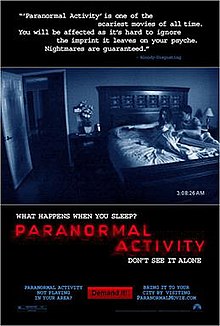Conventions of a thriller:
- Suspense
- A threat
- Protagonist
- Antagonist
- Enigma
A protagonist ("one who plays the first part, chief actor")is the main character (the central or primary personal figure) who ends up in conflict because of the antagonist.
Our short film is called "FATED" and is a psychological thriller. For the opening of our film, we used the conventions listed above to create the thriller genre. Using these conventions in our film help define and seperate it from the other genres, making it identifiable to the audience, and at the same time engaging them with the film. Without some of these conventions the film would not be able to hook the audience and keep them interested throughout the movie.
In our film there is only one character shown throughout the opening sequence, this begins to make the audience identify with the character, and begin to dentote them as a protagonist or antagonist. Futhermore the antagonist is not shown during the sequence, but there presence is made clear to the audience.


(Using certain camera angles and mis en scene, we were able to create the notion that the protagonist is being watched by the antagonist, by doing this we have begun to create suspense and the element of danger)

Having the antagonist masked or hidden in some way, is a popular way of create suspense and enigma in pscyholgical thrillers.
In the film "Seven" the antagonist is always hidden, and is only really shown to the audience through phone calls and diologue. This is a lot like our film as the antagonist is shown through phone calls and camera angles.
The same aspect applies to the film "Usual suspects" as the antagonist is shown as a masked character, as he is shown shadowed as the antagonist, futher on you then meet a few more of the characters, during interigations and thats when the audience begin to denote who the antagonist might be, and who the protagonist is. Which is also like our film because there is still an enigma to whom the prtagonist/antagonist is.
Format
In this shot is an establishing shot, bringing the audience into the film as we our introduced to the protagonists. There is use of non-diegetic sound of a car radio playing in this shot, this brings a sense of equilibrium to the scene, as it is just a normal day. We used a focus pull in this shot as the camera focuses on the tree then it brings focus to the car, it also brings attetion to the weather in the shot cloudy and cold, which connotes the atmosphere of the rest of the scene.
In this shot the audience begin to see images of the home that the protagonist is going to enter, we used cross cutting here. the extreme close up with low key lighting that creates a dark atmosphere, along with a subtle base line that suggests danger. We first used a quite high pitched violin sound, but we found that it made the film too much into a horror instead of a thriller, so we decided to remove it.
I found this shot to be quite intresting because it shows the audience that a child, maybe the protagonists, is involved somehow. Also the way lightigting is used and how the camera is in and out of focus is quite powerful, because it connotes that someone is still in the home and the danger is becoming more of a reality. creating enigma.
This shot is one long take and a MLS, as to keep the audience hooked because of the looming danger in the house. we used a lot of mis en scene to show that the prtagonist does in fact have a child such as, the baby photo just above the light switchand the photos to the right of her, to establish that the child is hers. As she enters the house she is coverd by shadow, masking her, until she turns on the light and is revealed to the audience, when the light is switched on the actors name then dissapears, i beleive this is a subtle but useful affect because it flows well. As she is shown to the audience we can then denote that she is a middle aged and middle class woman, there are many things such as her clothing and make up that suggest that she is a mother, making it clear to the audience her class and age, which may be important later on.
2. How does your media product represent particular social groups?

Fans across the country could demand -- literally, it turns out, by hitting a "Demand" button on its website -- that the movie screen in their area. That, in turn, determined which markets Paramount would select for a series of midnight screenings -- all achieved by using a bare minimum of select TV spots featuring reaction shots from Hollywood screenings and a smattering of online and radio ads.
4. Who would be the audience for your media product?
5. How did you attract/ address your audience?
6.what have you learnt about technologies from the process of constructing this product?
7. Looking back at your perliminary task, what do you feel you have learned in the progression from it to the full product?







No comments:
Post a Comment